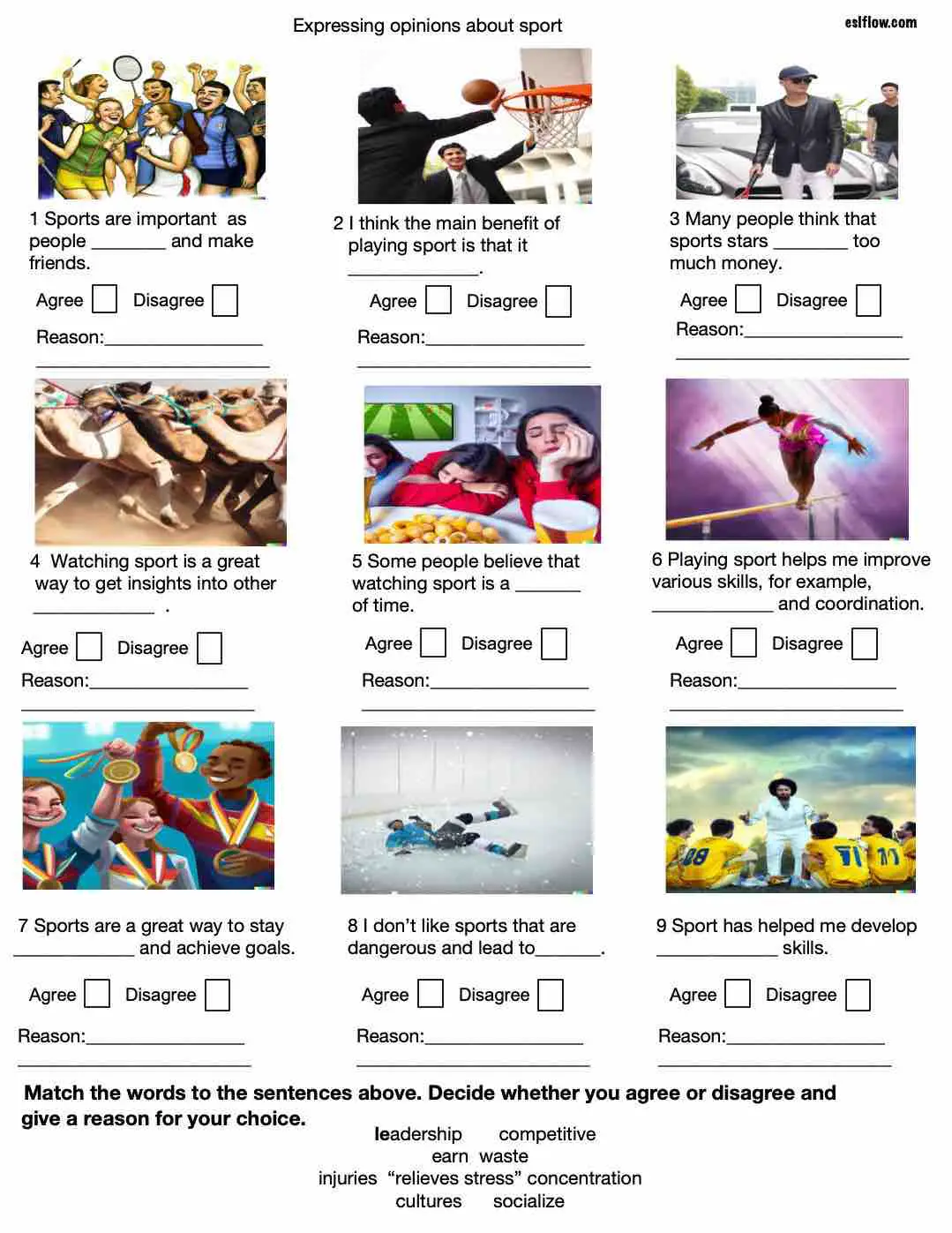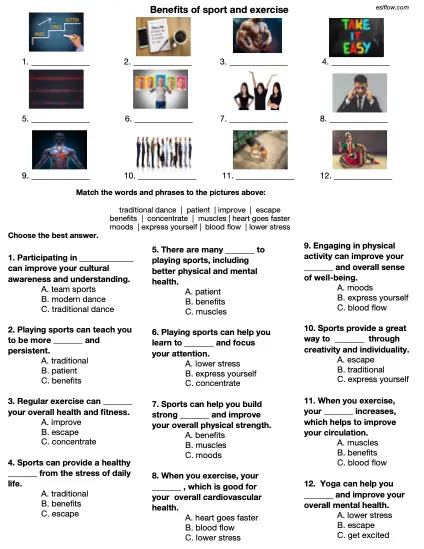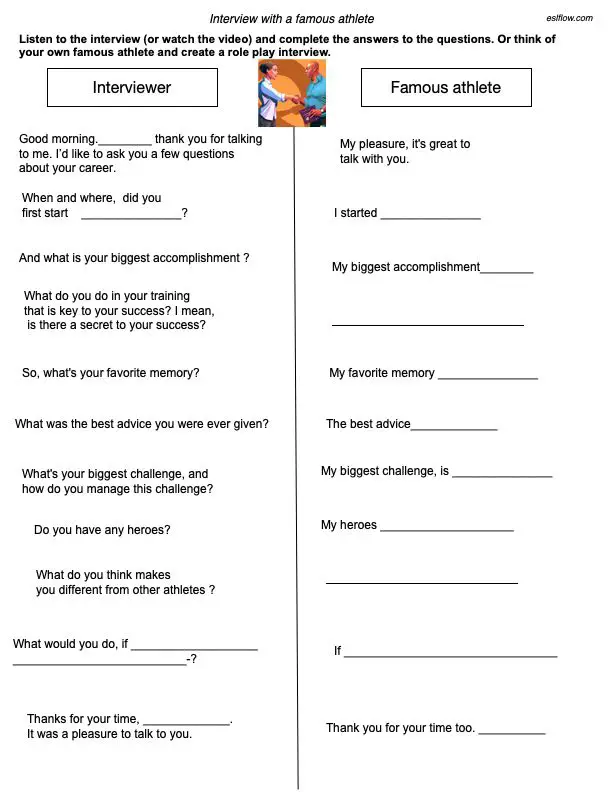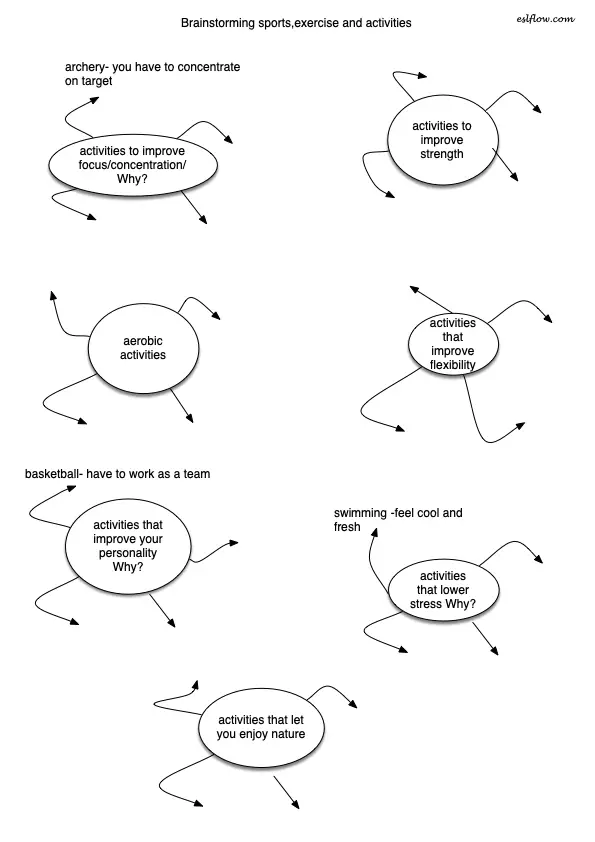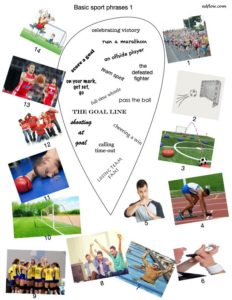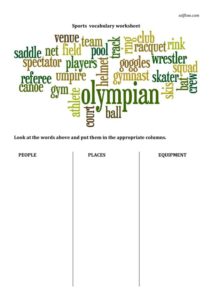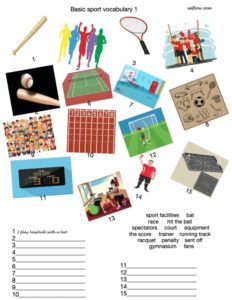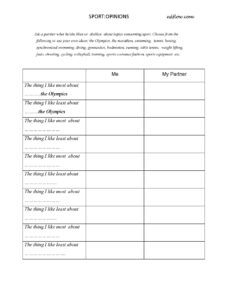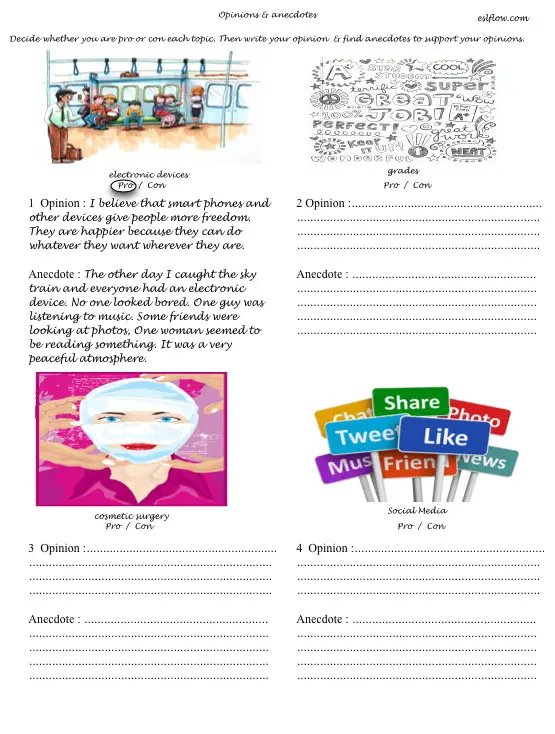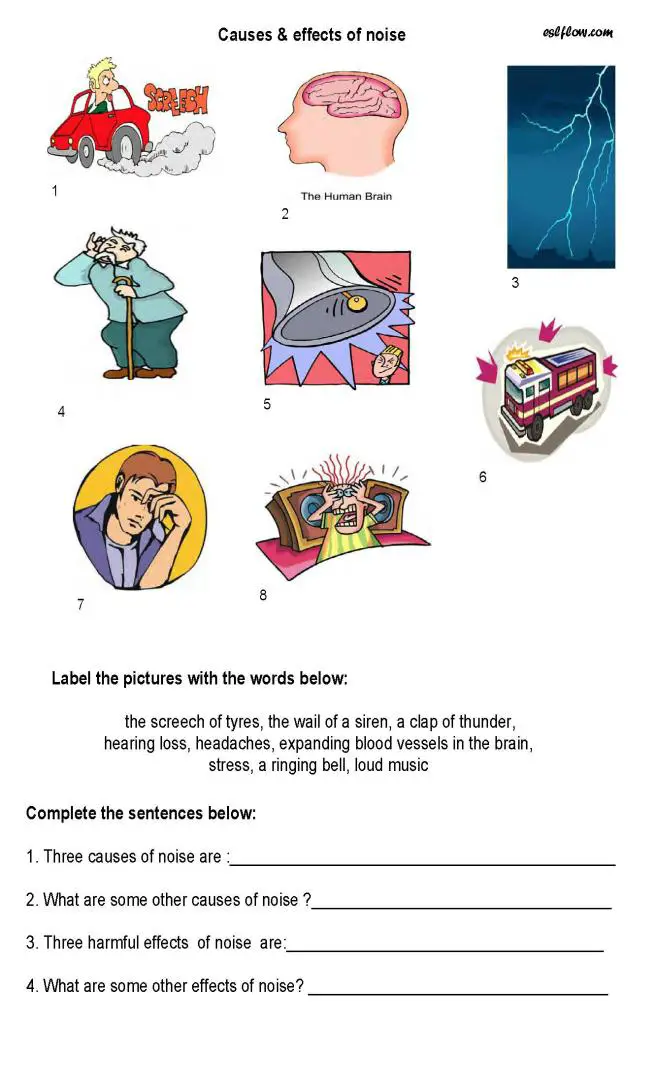Unleashing the Power of Sports and Exercise Vocabulary for ESL Learners
As sports and exercise play a significant role in the lives of millions worldwide, mastering this vocabulary will not only enable students of the English language to engage in meaningful conversations, but it will also open doors to a myriad of social and professional opportunities. From breaking the ice with strangers to discussing fitness goals with friends, or even exploring job opportunities in sports-related industries, the language of sports and exercise is an indispensable tool for ESL learners. So, let’s dive in and explore the exciting world of sports and exercise vocabulary together, and unlock the power of language for a healthier, more connected future!
23rd July 2024
Paris 2024 Olympics lessons
Find a collection of vocabulary and critical thinking exercises about the Paris Olympics here.
1 Expressing opinions about sport
A vocabulary and discussion activity about playing and watching sports. This is a listening/speaking exercise for English as a second language students to practice expressing opinions about sport.
Subscribe to Eslflow
Subscribe to get full access to the latest and best resources from eslflow.com. There are no ads in the newsletter and you will receive entertaining, high quality, and up-to-date teaching resources regularly. And, if you subscribe, you will get access to the latest advancements in artificial intelligence and prompt engineering, that will enable you to become a master of the English as a second language universe!
2 Health benefits of sport and exercise
A pre-intermediate exercise for introducing vocabulary useful for talking about sports and exercise.
3 Interview with a famous athlete (2022)
Not all students love sport, but for those that do, this is a great exercise. They can watch/listen to the model role play(which can also be used as a listening exercise) and then create a role pay about their sports hero.
4 Brainstorming the benefits of sports and free time activities
A great way to start a class talking about exercise, sport and health benefits.
5 Talking about sport questionnaire worksheet
This is a discussion and vocabulary exercise to help students learn or review common sporting vocabulary and discuss sport, exercise and health.
6 Basic sport phrases worksheet (with answers)
This is an exercise students to help learn common sporting phrases. Students match the phrases to the pictures and write short sentences.
7 Sport vocabulary sorting
This is an exercise students learn or review common sporting vocabulary. Students sort the words into the appropriate columns.
Sport vocabulary sorting (PDF)
8 Basic sport vocabulary (with answers)
This is another exercise students to help learn common sporting vocabulary. Students match the words to the pictures and write short sentences.
9 Sports discussion and opinion exercise
This is a pair work speaking exercise for students to give their opinions about sport. Students fill in the left hand columns with topics of their own choosing. Then they write their own ideas in the middle column. Finally, they interview their partners and fill in the third column.
Related Resources:
9 Super Elementary Speaking Exercises
5 Elementary Create a Conversation Exercises for Speaking Classes
5 Elementary Conversational Expressions Exercises
5 First Day Activities for an ESL Class
10 Really! Elementary ESL classroom icebreakers
7 Essential Speaking Activities for ESL Classes
12 Great Icebreakers to Start a Class
